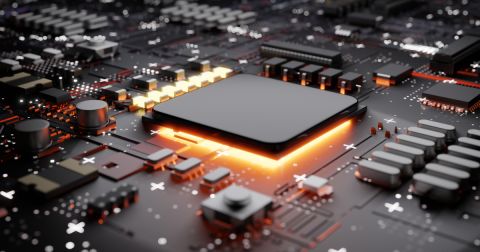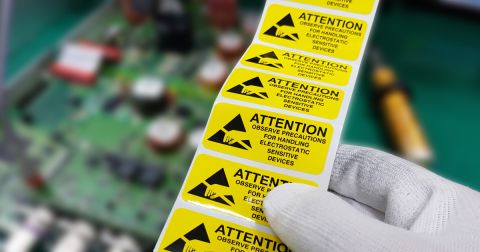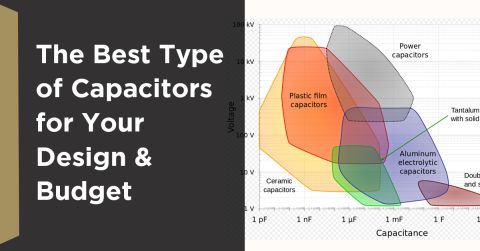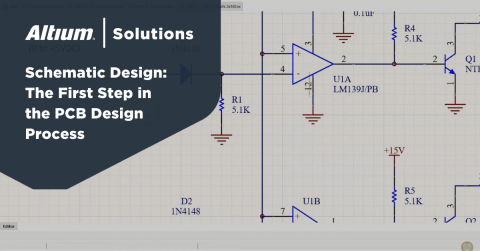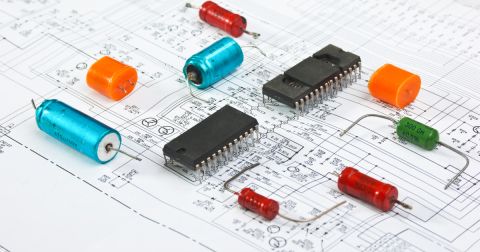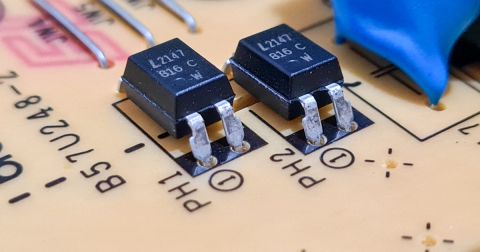An Overview of Dual Power Supply Design

Dual power supplies are circuits that generate two different output voltages from a single input source. There are numerous types and configurations possible. The most common configuration provides two different positive DC voltage outputs or two equal magnitude and opposite polarity DC voltage outputs.
For circuits that combine digital control with a high power function, such as an industrial control application, the requirement for two different positive DC voltage outputs is common. First, a regulated and low-noise 5V supply provides power for the digital control elements such a microcontroller chips and digital signal processors. Secondly, the higher voltage output is then used for switching and motor control functions where a lower supply voltage could require excessively high current flow. Such elements may have less stringent noise requirements; indeed, they may generate noise that needs to be isolated from the digital control circuitry.
Another typical dual power supply application is analog signal processing and amplification circuits such as audio equipment. Having positive and negative output voltages of equal magnitude is required for circuits built around operational amplifiers or the processing and conversion of analog signals using analog to digital converters where waveform characteristics need to be preserved. Often, circuits with very low power requirements can use a single power supply linked to a resistive divider circuit that creates a virtual ground. This simple, low-cost solution is effective as long as the power loss and voltage drop across the resistors are acceptable. For higher power or better efficiency, the dual power supply circuit is necessary.
Tapped Transformers
The simplest method of generating dual output voltages is to use a transformer with two taps on the output winding. For example, a center-tapped transformer will produce two equal output voltages. Bespoke transformers can have any voltage ratio depending on the number of windings in each part of the output side of the transformer.
The transformer can be connected directly from an AC supply such as the mains supply or driven from a DC supply as part of a switch-mode power supply circuit. For example, a single rectifier across two of the transformer outputs with the third output as the ground reference will generate two unregulated DC outputs. Regulation and filtering can then be separately applied to each of the two outputs as required.
In the case of the positive and negative output voltages of equal magnitude, these post-rectifier circuits will most probably be almost identical. The only difference is if integrated circuit regulators are used. One will be regulating a positive voltage and the other a negative voltage, requiring different models from the same product family. The post rectification circuit can be very simple, even as simple as a diode connected to the high and low terminals of the tapped transformer.
In the above image, the center tap is the 0V ground between the two outputs. If the turns ratios between top two coils are equal to the turns ratio for the bottom coils, then the output voltages will be equal magnitude and opposite polarity.
In the case of the two positive voltages with different applications, the post-rectifier circuits for each voltage can be optimized for the circuits driven by each supply. In addition, regulators and output filtering can be tuned as required to meet the design goals and constraints for the overall device.
Single Line Transformers
An alternative option for generating the two positive voltages for different applications is to use a transformer with a single output winding to generate the higher voltage with a traditional rectifier, filter, and regulator circuit. The second, lower voltage, can then be generated using a second regulator to produce the lower output voltage. This approach simplifies the transformer but with the trade-off that the lower power rail will be more susceptible to disruption or interference due to loads on the higher voltage rail.
An example is shown in the TI reference design below. In this reference design, there is a custom transformer that takes a single line input and couples power over to 3 outputs. The two outputs on the secondary side are rectified down to a single rail. The output on the primary side is then stepped down through a voltage divider and used in a sense amplifier to regulate the input rail level. This is one useful option for applying regulation on the input side, rather than sensing the output and passing the measurement back to the primary side with an octocoupler.
Although the secondary side outputs are ganged together and rectified to provide a DC output, the two rails could be used as separate output rails as illustrated in the multitap transformer symbol above. The output voltages can then be easily adjusted via their turns ratios with respect to the primary input coil.
Integrated Solutions
For applications where the dual supply is only required for low power circuits and board space is a premium, single-chip voltage dual-rail voltage regulators can offer a simple solution. These chips will take a DC supply voltage and can generate multiple ouptuts from a single IC, including a pair of positive and negative output voltages. An example is the LM27762 from Texas Instruments; the circuit below is one example from an Altium project that takes a 5V input and outpts +3V and -2V from a single chip.
Design Tips
Designing circuits and board layouts for dual power supplies should follow precisely the same principles and rules for an equivalent single power supply. The additional factors to consider are the interactions between the two supplies.
Noise generated by one circuit may be coupled to the other, particularly if traces from the two supplies are routed alongside each other on the board. If this is a particular issue, keeping traces separated and crossing traces at ninety degrees can minimize cross-coupling effects.
Thermal management considerations may be affected if the supply circuitry creates additional localized heating, particularly in the two supplies' components close.
Summary
There is a range of techniques available for the designer who needs dual power supplies for the circuit. The most appropriate will be dictated by the loads that the power supplies drive regarding current flow needs and tolerance to voltage drop, ripple effects, and noise. In addition, the common trade-offs of performance, cost, and space will determine the optimum solution from a simple resistor divider to mirrored switch-mode circuits.
